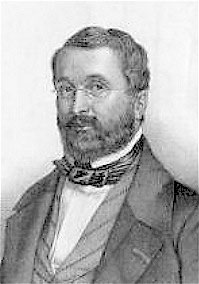The Minuit, Chrétiens in Québec by Jean-Yves Bronze
/ December 6, 2003
Version française...
 Minuit
Chrétiens, also known as Cantique
de Noël, and in English as O Holy Night, is surely the most evocative
and representative song of the Christmas period. Its harmonious, solemn and
moving melody is timeless, evoking nostalgic childhood memories of Christmas
festivities, gift exchanges, and the Midnight Masses for which it was
destined. Minuit
Chrétiens, also known as Cantique
de Noël, and in English as O Holy Night, is surely the most evocative
and representative song of the Christmas period. Its harmonious, solemn and
moving melody is timeless, evoking nostalgic childhood memories of Christmas
festivities, gift exchanges, and the Midnight Masses for which it was
destined.
In French Canada the performance of this song was
once an honour reserved for either an eminent performer or the parish soloist.
On hearing the words "O Holy night, the stars are brightly shining, It is the
night of the dear Saviour's birth," heads would immediately turn to the choir
loft.
While the hymn is well known today, few are
familiar with its background. Ironically, the two musicians who made it so
popular in their respective nations--Adolphe Adam in France, and Ernest Gagnon
in Quebec--have both long been forgotten. Here is the story of the carol's
origin in Quebec.
Quebec's Cantique de Noël
Contrary to popular opinion, the song Minuit
Chrétiens is relatively recent and does not come down to us from the period
of New France. It was composed in Paris in 1847 by Adolphe Adam, originally for
soprano voice, and entitled Cantique de Noël. It had such depth and
dramatic power that it quickly became all the rage, and after only a few years
was sung in churches, salons, and concert halls everywhere.
In September 1857, at the age of 22, Ernest Gagnon
was one of the first young Canadian musicians to further his studies in Europe.
On scholarship at the Conservatoire in Paris, he studied piano with Henri Herz,
harmony with Alexandre Goria and composition with Auguste Durand. During this
period, he met Rossini, Verdi, and Niedermeyer, among other notables.
Canadians rarely traveled to France during its
Second Empire, so Gagnon struck up a friendship with another young grant
recipient, Joseph Perrault of Montreal; he was an agriculture student and future
MP. On Christmas Eve, 1857, they decided to attend Midnight Mass together at the
church of Saint Roch in Paris, the parish church of Napoléon III. Gagnon later
remarked, "Crossing the threshold of the immense church of Saint Roch, I heard a
wondrous soprano voice singing an unknown melody: it was Adolphe Adam's
Cantique. The impression made on me by this heavenly child's voice was so
intense that time has only dimmed but not erased it."
Returning to Canada in December 1858, still
enthralled by Adam's music, Ernest Gagnon undertook to introduce the work to the
local population in Quebec City. The carol was sung for the first time that year
by the eldest daughter of judge René-Édouard Caron, later Quebec's lieutenant
governor, at Midnight Mass at the church in Sillery. The famous Cantique
was then repeated at both morning and evening Christmas services at
St-Jean-Baptiste Church in the Lower Town of Quebec by Madeleine Belleau,
accompanied on the harp by Mrs. Peter Sheppard with Gagnon himself at the great
organ.
Its success was an incredible triumph throughout
French Canada. But in 1859, a controversy broke out in the press (L'Ère
Nouvelle of Trois-Rivières and Le Journal de Québec) about Minuit
Chrétiens in exchanges between Ernest Gagnon and Antoine Dessane
(1826-1873), a renowned French musician living in Canada. Likely jealous,
Dessane's tone was particularly aggressive. He was angry that Adam's music had
been introduced to the Canadian public by someone of lesser musical reputation.
But in the long run Dessane lost public favour to a magnanimous Gagnon.
Over the years Minuit Chrétiens was
criticized, its music judged too pompous, as were its lyrics, written by a
Freemason who was an alcoholic to boot (Placide Cappeau, mayor of Roquemaure,
France, 1808-1877). (The English lyrics were written by American clergyman John
Sullivan Dwight, 1812-1893.) In 1905, Gagnon, then 71, wondered if Minuit
Chrétiens would survive much longer; but today the controversy has long
disappeared, while the work has become a seasonal standard.
[Translated by Susan Spier]
Version française... |
|


